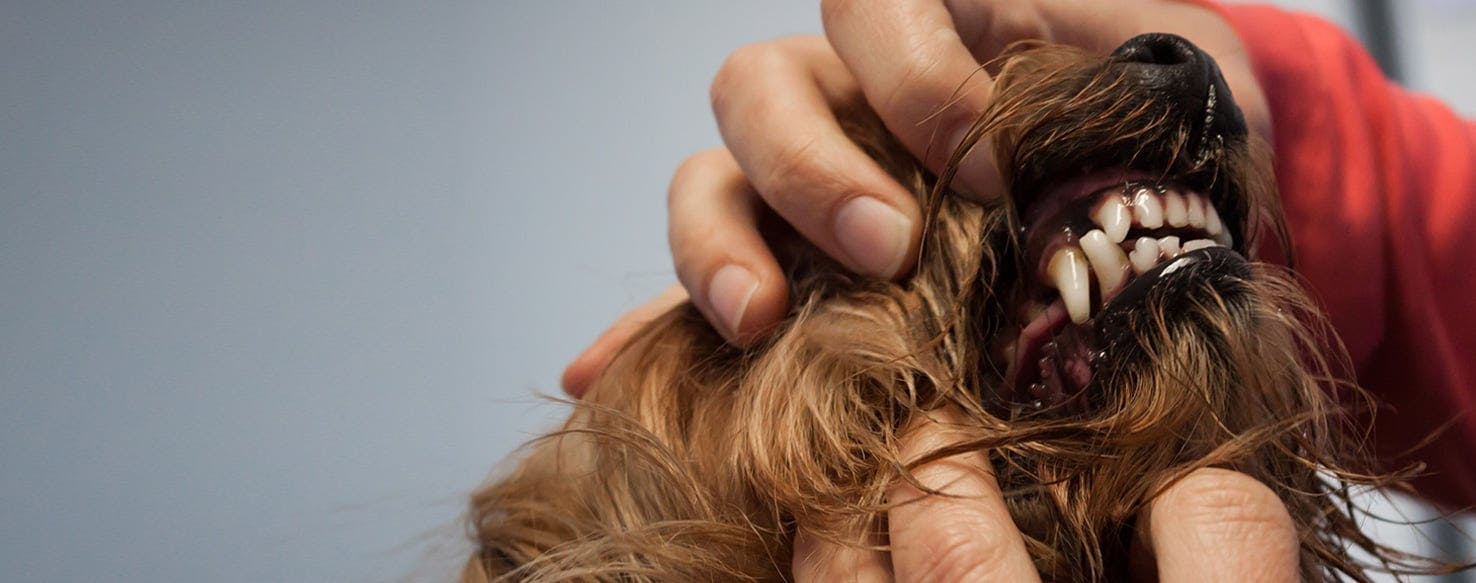Dogs are naturally very hard on their teeth, after all, they spend the vast majority of their life chewing on everything from dry food to bones, toys, and any number of things they really shouldn't. When you take this into consideration, it should come as no surprise that over the course of their life, their teeth are going to show signs of wear and tear. While some wear is quite natural, there are times when the wear can be excessive, causing abnormal losses to the top layer of your dog's teeth, a condition known as attrition.
What Teeth Are Affected by Attrition?
While all of your dog's teeth can be affected by attrition, the most commonly affected are the incisors, as they tend to do most of the biting. In time, as your dog's teeth wear down, the root or pulp can become exposed. Your dog's body has a natural defense to this situation in which the root of the tooth is covered by a protective layer known as dentin. Dentin looks like a dark spot in the middle of the affected tooth.
Chances are good that if your dog is suffering from attrition, you will be able to see it in the form of worn teeth that appear to be lower than those surrounding the affected tooth. On top of this, once the condition has reached the point at which the nerve is exposed, your dog is going to experience some level of pain.
Diagnosing and Treating Attrition
Although attrition, in and of itself, may not be of major concern or pose any major health risks, it could be indicative of more significant oral health issues. This is why routine checkups by your dog's favorite veterinarian are so important. During each visit, the vet will perform a complete oral examination, during which he will find any broken or damaged teeth, signs of periodontal disease, oral tumors, stomatitis, or any other oral health issues that could pose a serious risk to your pup's health. Experts say that approximately 80 percent of all dogs age 5 and up have at least some level of periodontal disease.
If your dog's teeth show normal levels of attrition and there is no sign of pulp exposure, treatment may not be required. However, you should continue to take your pup to see the vet for regular checkups and dental treatment to help correct the problem. In the event there is rapid wear or a fractured tooth with healthy pulp that has not exposed the inner pulp canal, the vet may be able to apply a dental sealant.
However, the dental sealant is only a temporary solution that will prevent bacteria from entering your dog's body. In time, the sealant will succumb to attrition, but it is possible it will last long enough for a natural seal to be formed as your dog's body produces dentin, which is a natural reparative.
In the event the wear is extensive and the pulp canal has become exposed, the vet may have no choice but to perform root canal therapy or remove the tooth altogether. It is also possible that the vet may need to install a metal crown to strengthen the structure of the weakened tooth.
Now the Good News
The good news is now that you know what dental attrition is and what the results of this condition can be for your dog, you should also understand just how important it is to have your vet perform a full oral examination and dental cleanings on a regular basis. You should also be brushing your dog's teeth on a regular basis--most veterinary dentists recommend brushing them daily. This will help to stop and may even reverse many forms of dental disease. While this may not stop the teeth from wearing, it can help to slow it down and will make it much easier for your vet to handle any necessary repairs.
Preventative care for pets can be expensive, and pet insurance plans usually don’t cover dental cleanings. Wellness packages can reimburse up to 100% of the cost of routine exams and diagnostic tests within 24 hours. To find the right option for your pet and budget, check out our
wellness plans.

